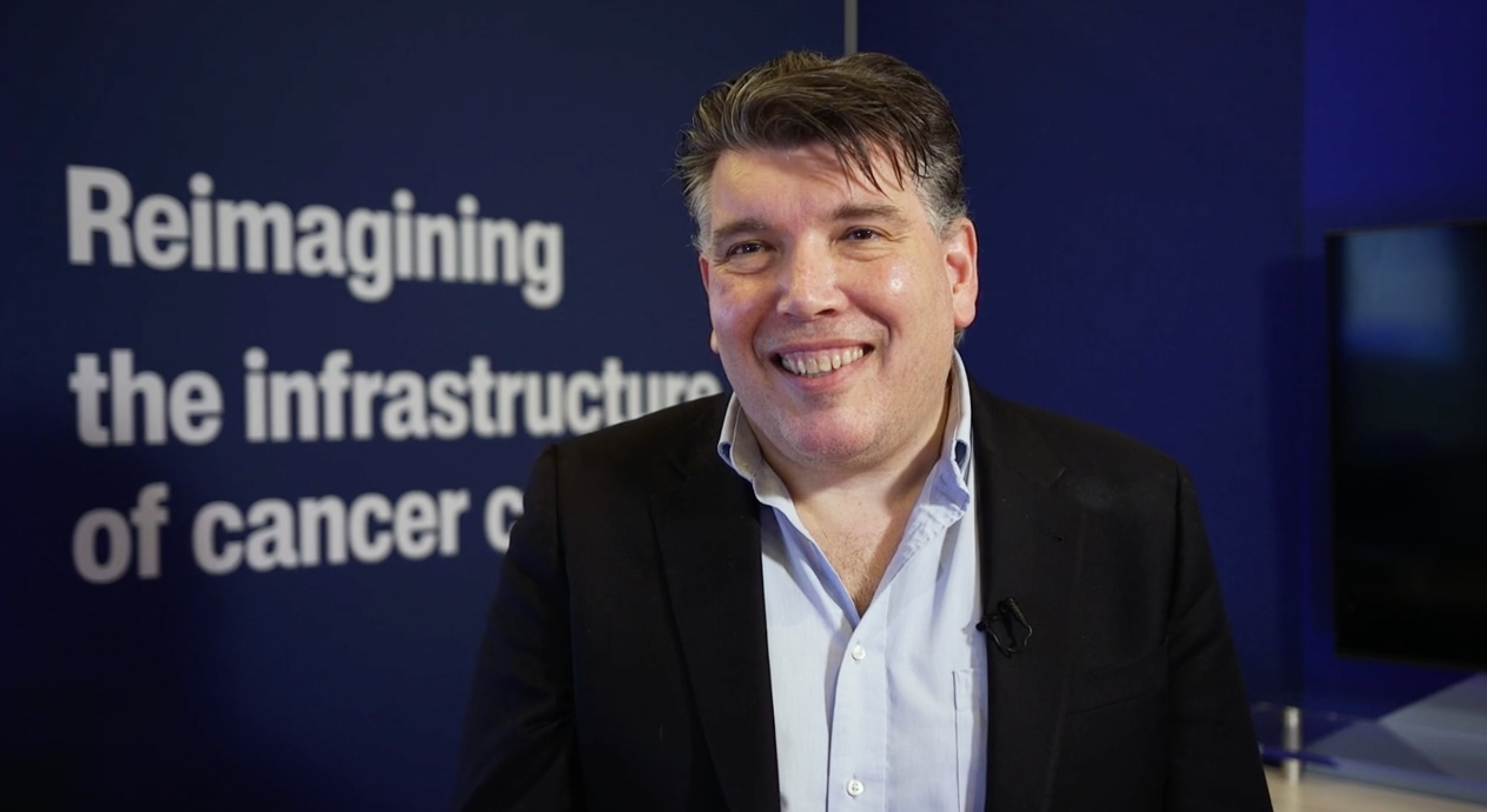Oncology care is becoming more complex every day, offering hope to patients, but bringing challenges to clinicians who need access to the latest and most accurate data. Collaboration and shared standards are essential for ensuring that the industry can maximize the potential of precision medicine.
Oncology care is evolving at the speed of light as researchers, clinicians, and technology companies dig deeper into the secrets of the human genome, changing the way providers address hard-to-treat cancers.
“By the end of 2024, we expect to move from 17 to 32 unique, FDA-approved biomarkers. The corresponding targeted therapies are also going to increase, from 38 to more than 60, based on the pipeline right now,” said Nate Wade, PharmD, Associate Director of Clinical Oncology at Flatiron Health, moderating a recent panel hosted by Flatiron Health.
These targeted therapies hold significant promises for better outcomes for patients. But how can the industry collaboratively generate and deploy evidence-based best practices so new therapies can be used to their full potential?
Equip clinicians with point-of-care clinical decision support
Oncologists need the right information at the right time to correctly identify treatments or clinical trial options that are best suited for each of their patients. Clinical decision support (CDS) tools can offer actionable insights for treatment decisions.
“Using the right technology that presents evidence in a meaningful way is crucial for being precise about decision-making,” said Alan Braly, Senior Director of Data and Insights Delivery at Foundation Medicine, a molecular insights company. “We want to make sure that we're inside the workflows in a way that is intuitive and helpful so that clinicians can really leverage that information at the point of care.”
The key is to create knowledge management systems that augment and enhance an oncologist’s clinical experience without increasing cognitive burdens, agreed Tom Stricker, MD, Medical Director of Precision Medicine at OneOncology, a community oncology network that collaborates with practices to deliver comprehensive care.
“Expecting a busy oncologist to keep everything in his or her head while seeing 30 patients a day is unsustainable,” he noted. “When you add on requirements like understanding reimbursement rules for each of a dozen payers, it’s clear we need more robust systems to assist providers with their work.”
CDS systems and complementary tools for prior authorizations, benefit checks and reimbursement management must be adaptable and include frequent updates to keep them aligned in a quickly changing world, added Jared Cotta, Head of Precision Oncology Programs for Caris Life Sciences®, a molecular science and technology company.
“It’s not realistic for any one person to keep up with all the potentially applicable guidelines for every condition they might treat, so the tools we develop have to be agile in the way they incorporate new FDA approvals or NCCN guidelines,” he said. “Fortunately, there are many willing partners who are working on these applications so that we can get the information to the providers in a timely manner.”
Invest in shared data standards to seamlessly communicate and collaborate
Cancer care is a collaborative process that involves many stakeholders, all of whom must have access to the same insights on their shared patients to ensure that treatment proceeds in a coordinated way.
“PDFs are very central to the way we do things right now, but they only provide a snapshot in time,” pointed out Wade. “Sometimes a PDF of a variant that was of unknown significance a couple of years ago is now suddenly relevant and targetable. But if that information is tucked away in a static, unstructured document, it might get missed.”
This strategy might not be sufficient in the near future as treatment moves away from individual biomarkers to determining care based on a more comprehensive genetic signature, said Cotta.
“We need someone to lead this progression to more flexible and interoperable data standards, and that is something Flatiron’s OncoEMR® is looking to do, for example. “It’s exciting to start moving away from those snapshots towards more dynamic data formats that we can revisit as new biomarkers are approved and new guidance is released,” he said.
Looking forward to the future of increasingly personalized precision medicine
Precision medicine is only getting more advanced, and game-changing new clinical approaches are right over the horizon, said Dr. Stricker.
“I’m looking forward to liquid biopsies. The idea that we might be able to run a blood sample for a breast cancer patient on long-term Tamoxifen and determine that you can take them off that therapy is going to be life-changing for a lot of people,” he said.
For Braly, the future is bright for increasingly robust clinical and administrative decision support as cancer clinics generate and share more standardized data.
“It’s not just about making better clinical decisions. Now, I can also start taking a closer, more informed look about how my practice is doing and learn more about how my providers are performing. That lets me see when, where, and how I can improve overall, which is better for patients as well as for my business goals.”
Meanwhile, Cotta sees the movement toward more collaborative, standardized data practices as a way to increase access for patients and boost diversity in clinical research.
“Better access means better care equity,” he concluded. “I’m eager to see a more representative population being sequenced so we're able to drive clinical trial enrollment across the broader population of the US.”
“It’s wonderful to see people coming together to work on these technologies and strategies that will bring research into the community more easily and create an environment where precision medicine is accessible to everyone.”
Watch the video of the panel discussion to learn more.
.png)


